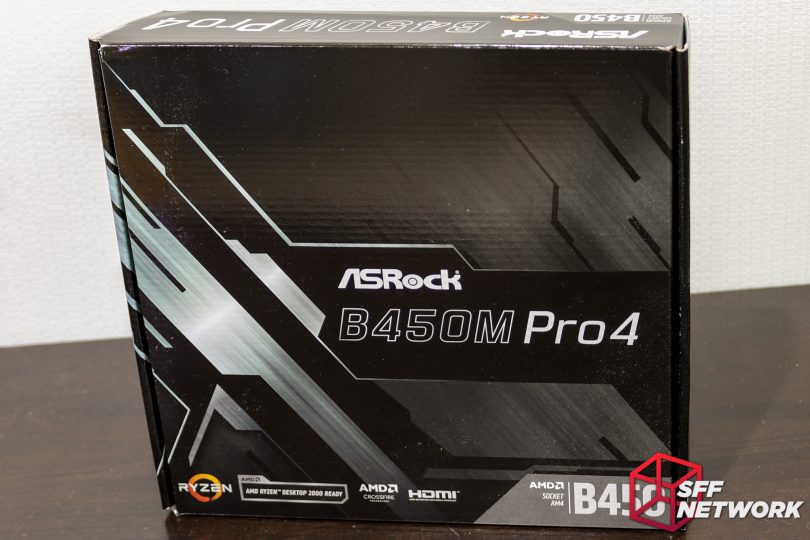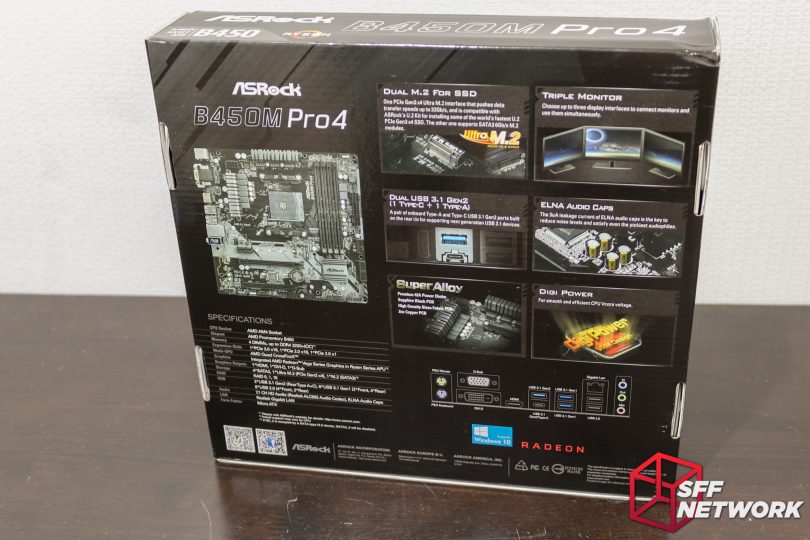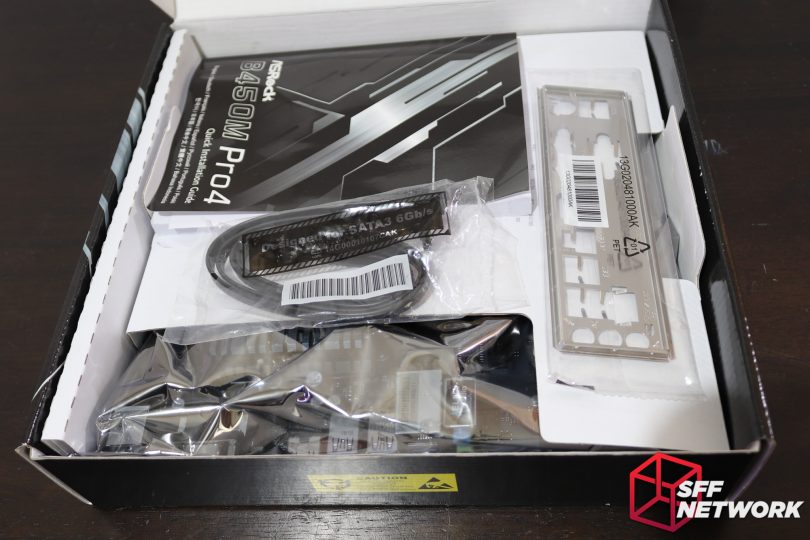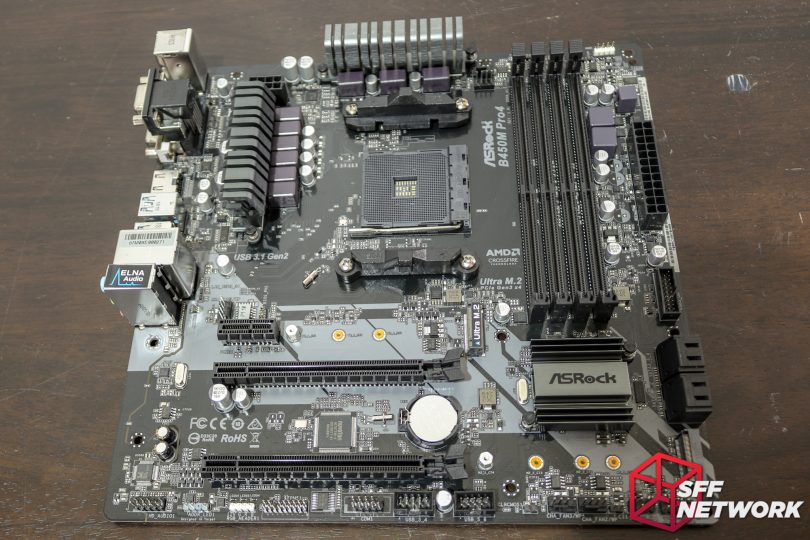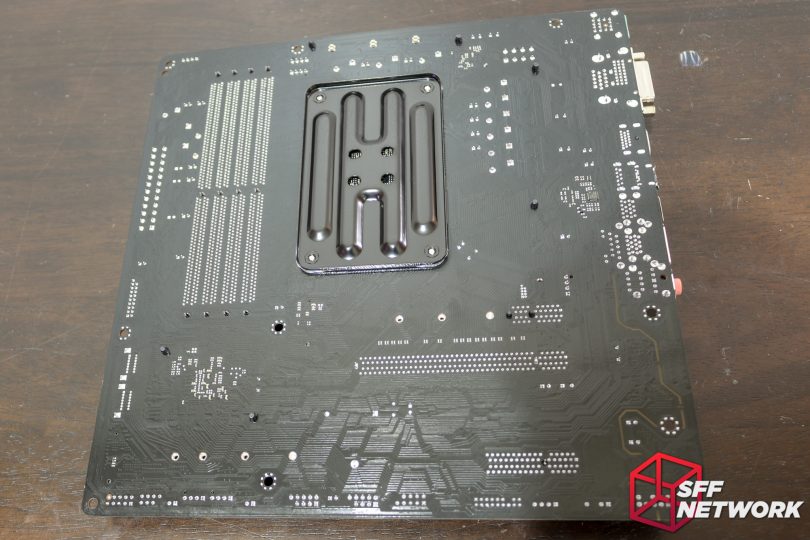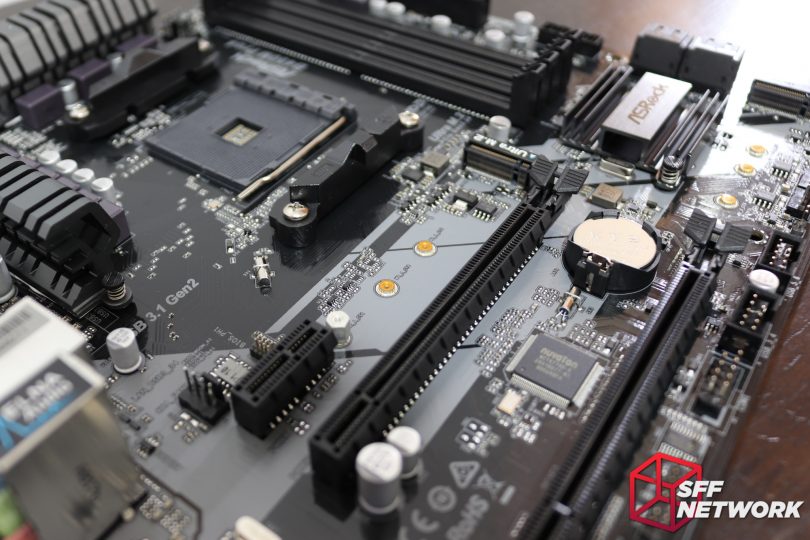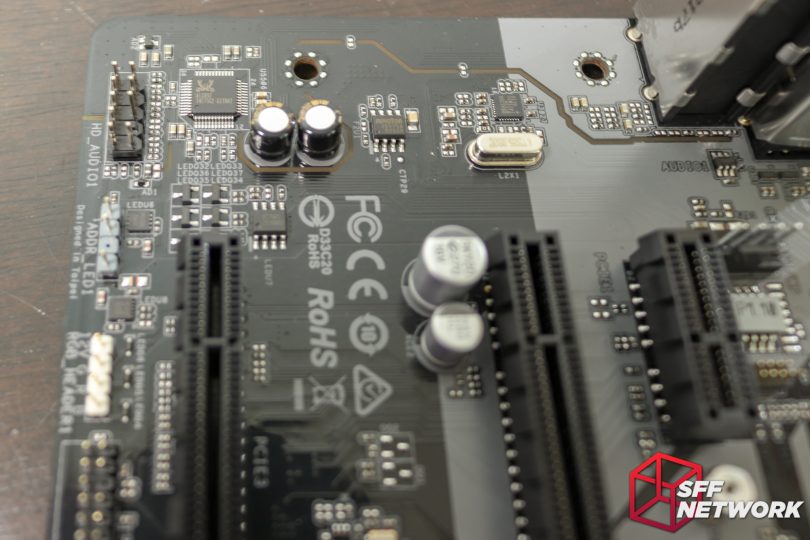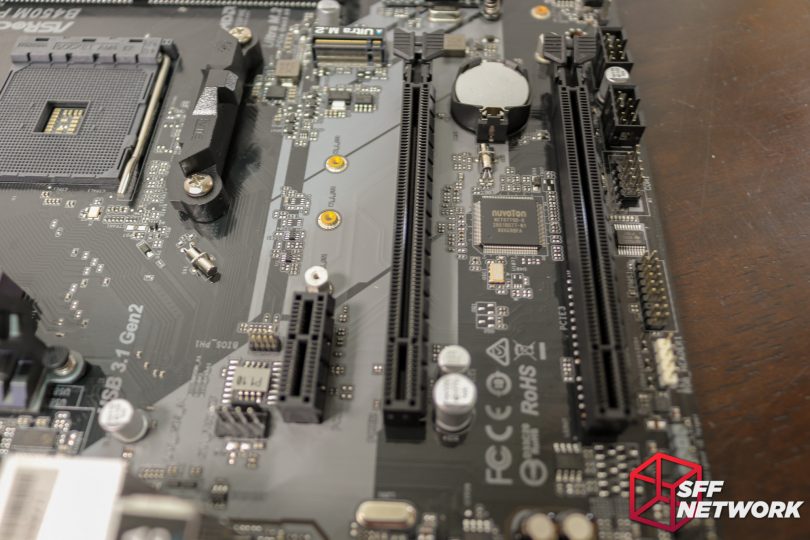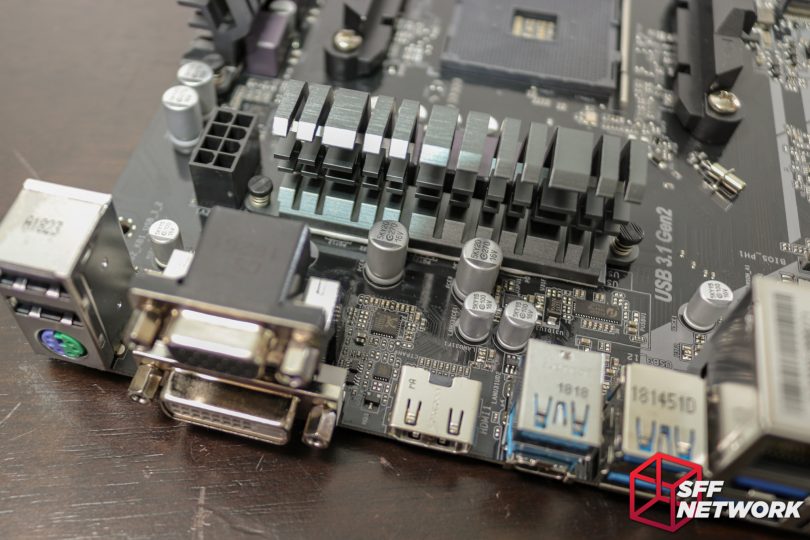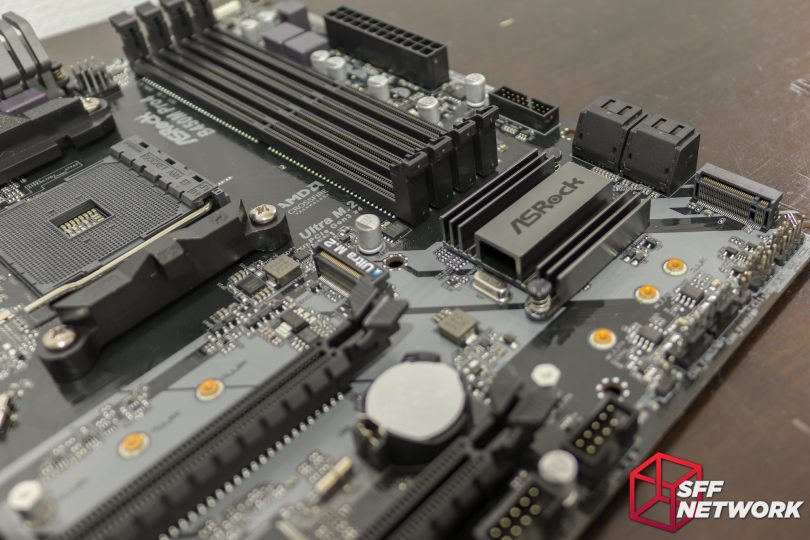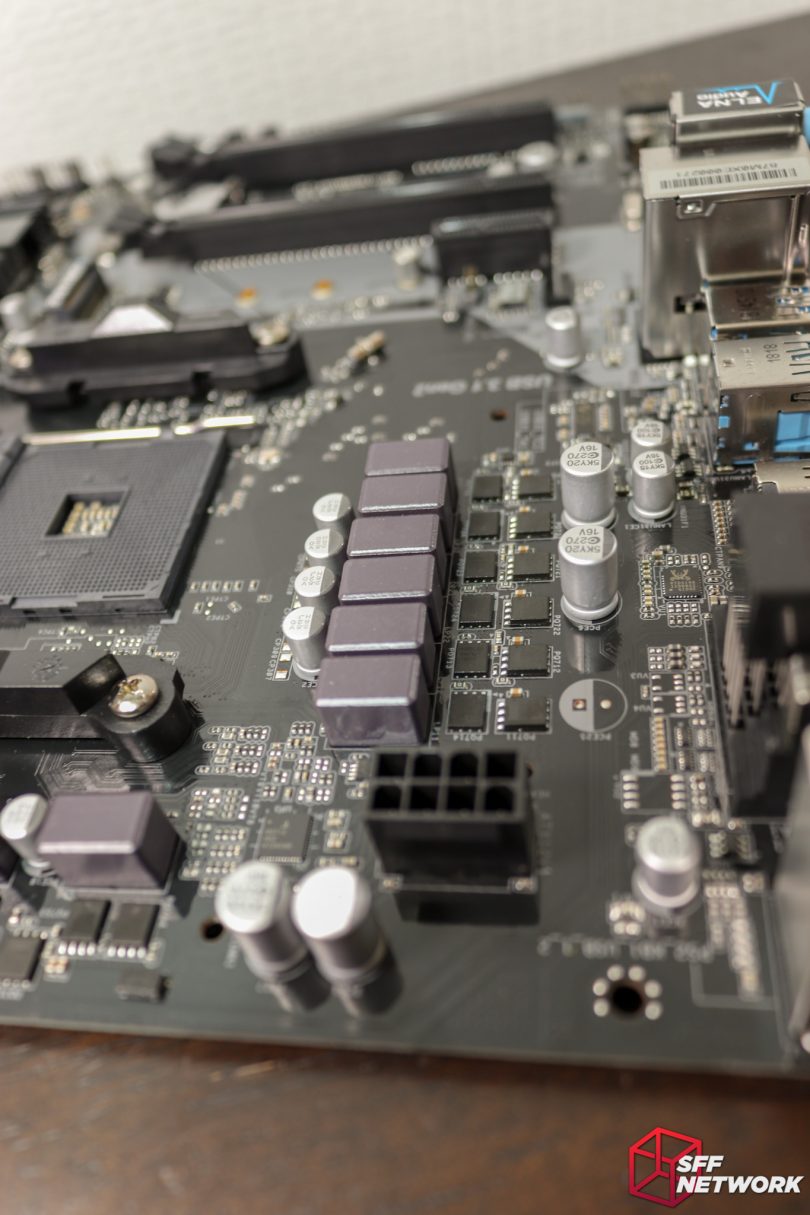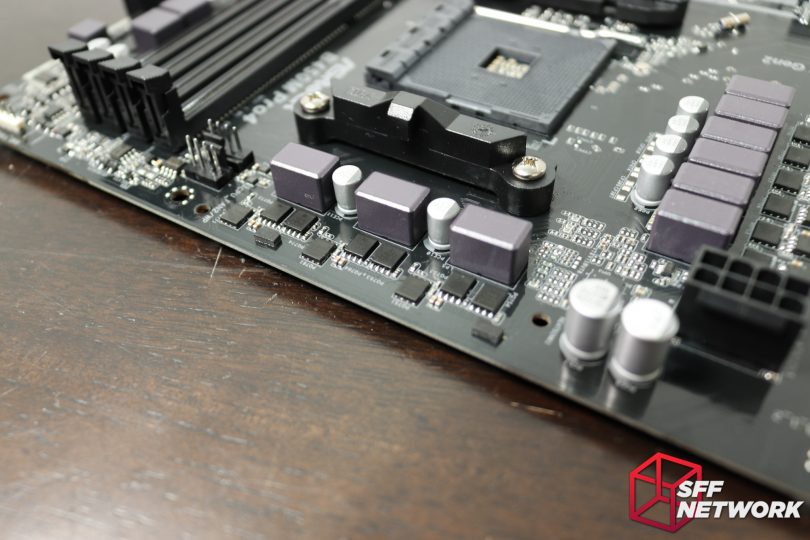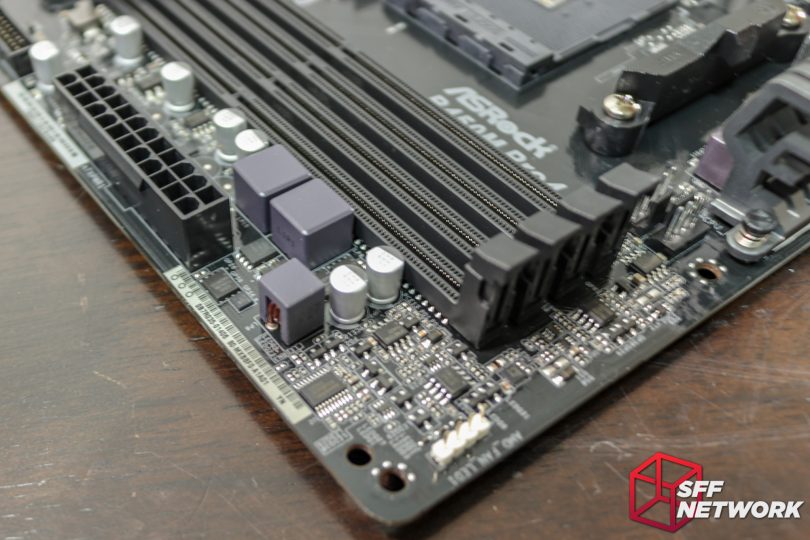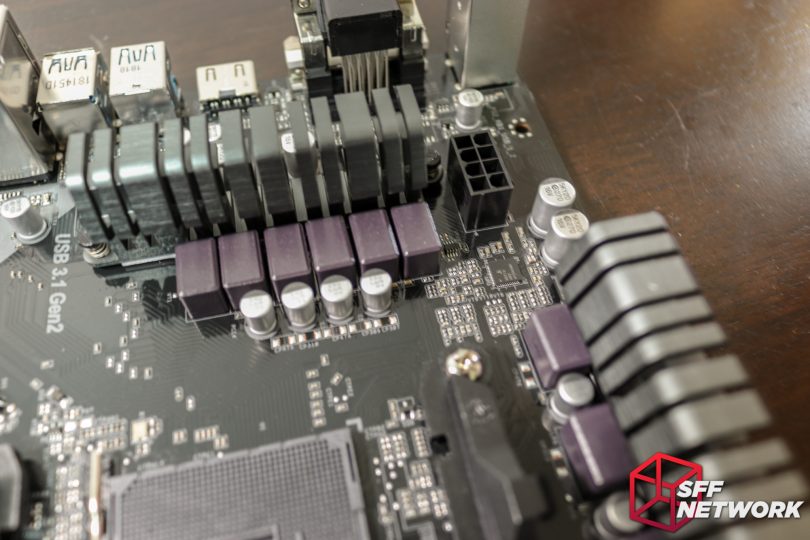Micro-ATX, the oft-ignored form factor, stuck between the expandability (and HUUUUGEness) of ATX and the size of M-ITX. For generations, the M-ATX market segment has been filled with mediocre boards from a cursory glance, leaving folks to go to one extreme or the other instead. In fact, I have mused publicly in the past on this, a sad perspective of the middle child of the PC world.
ASRock has long been a stalwart of high density computing options, with the DeskMini range, insane Mini-ITX boards and the like – I was intrigued to see what their B450M Pro4 has to offer a modern consumer, shopping in the low to mid price range – can we get the same level of density on a cheaper board? Let’s see.
Table of Contents
The Specifications
| Model | B450M Pro4 |
| Form Factor | Micro-ATX (244 x 244mm) |
| CPU Socket | AMD AM4 |
| Chipset | AMD Promontory B450 |
| Memory | – Dual Channel DDR4 Memory Technology – 4 x DDR4 DIMM Slots – AMD Ryzen series CPUs (Pinnacle Ridge) support DDR4 3200+(OC) / 2933/2667/2400/2133 ECC & non-ECC, un-buffered memory* – AMD Ryzen series CPUs (Summit Ridge) support DDR4 3200+(OC) / 2933(OC) / 2667/2400/2133 ECC & non-ECC, un-buffered memory* – AMD Ryzen series CPUs (Raven Ridge) support DDR4 3200+(OC) / 2933(OC) / 2667/2400/2133 non-ECC, un-buffered memory* – Max. capacity of system memory: 64GB** |
| BIOS | – 128Mb AMI UEFI Legal BIOS with multilingual GUI support – Supports “Plug and Play” – ACPI 5.1 compliance wake up events – Supports jumperfree – SMBIOS 2.3 support – DRAM Voltage multi-adjustment |
| Graphics | – Integrated AMD Radeon™ Vega Series Graphics in Ryzen Series APU* – DirectX 12, Pixel Shader 5.0 – Max. shared memory 2GB – Three graphics output options: D-Sub, DVI-D and HDMI – Supports Triple Monitor – Supports HDMI with max. resolution up to 4K x 2K (4096×2160) @ 24Hz / (3840×2160) @ 30Hz – Supports DVI-D with max. resolution up to 1920×1200 @ 60Hz – Supports D-Sub with max. resolution up to 1920×1200 @ 60Hz – Supports Auto Lip Sync, Deep Color (12bpc), xvYCC and HBR (High Bit Rate Audio) with HDMI Port (Compliant HDMI monitor is required) – Supports HDCP with DVI-D and HDMI Ports – Supports 4K Ultra HD (UHD) playback with HDMI Port*Actual support may vary by CPU |
| Audio | – 7.1 CH HD Audio with Content Protection (Realtek ALC892 Audio Codec)* – Premium Blu-ray Audio support – Supports Surge Protection – ELNA Audio Caps*To configure 7.1 CH HD Audio, it is required to use an HD front panel audio module and enable the multi-channel audio feature through the audio driver. |
| LAN | – PCIE x1 Gigabit LAN 10/100/1000 Mb/s – Realtek RTL8111H – Supports Wake-On-LAN – Supports Lightning/ESD Protection – Supports Energy Efficient Ethernet 802.3az – Supports PXE |
| Slots | AMD Ryzen series CPUs (Summit Ridge and Pinnacle Ridge) – 1 x PCI Express 3.0 x16 Slot (PCIE2: x16 mode)* – 1 x PCI Express 2.0 x16 Slot (PCIE3: x4 mode) AMD Ryzen series CPUs (Raven Ridge) – 1 x PCI Express 3.0 x16 Slot (PCIE2: x8 mode)* – 1 x PCI Express 2.0 x16 Slot (PCIE3: x4 mode)- 1 x PCI Express 2.0 x1 Slot – Supports AMD Quad CrossFireX™ and CrossFireX™*Supports NVMe SSD as boot disks |
| Storage | – 4 x SATA3 6.0 Gb/s Connectors, support RAID (RAID 0, RAID 1 and RAID 10), NCQ, AHCI and Hot Plug* – 1 x Ultra M.2 Socket (M2_1), supports M Key type 2242/2260/2280 M.2 PCI Express module up to Gen3 x4 (32 Gb/s) (with Summit Ridge, Raven Ridge and Pinnacle Ridge)** – 1 x M.2 Socket (M2_2), supports M Key type 2230/2242/2260/2280 M.2 SATA3 6.0 Gb/s module*M2_2 and SATA3_3 share lanes. If either one of them is in use, the other one will be disabled.**Supports NVMe SSD as boot disks Supports ASRock U.2 Kit |
| Connectors | – 1 x COM Port Header – 1 x TPM Header – 1 x Chassis Intrusion Header – 1 x Power LED and Speaker Header – 1 x RGB LED Header* – 1 x Addressable LED Header** – 1 x AMD Fan LED Header*** – 1 x CPU Fan Connector (4-pin)**** – 1 x CPU/Water Pump Fan Connector (4-pin) (Smart Fan Speed Control)***** – 3 x Chassis/Water Pump Fan Connectors (4-pin) (Smart Fan Speed Control)****** – 1 x 24 pin ATX Power Connector – 1 x 8 pin 12V Power Connector – 1 x Front Panel Audio Connector – 2 x USB 2.0 Headers (Support 4 USB 2.0 ports) (Supports ESD Protection) – 1 x USB 3.1 Gen1 Header (Supports 2 USB 3.1 Gen1 ports) (Supports ESD Protection)*Supports in total up to 12V/3A, 36W LED Strip**Supports in total up to 5V/3A, 15W LED Strip***The AMD Fan LED Header supports LED strips of maximum load of 3A (36W) and length up to 2.5M.****The CPU Fan Connector supports the CPU fan of maximum 1A (12W) fan power.*****The CPU/Water Pump Fan supports the water cooler fan of maximum 2A (24W) fan power. ******The Chassis/Water Pump Fan supports the water cooler fan of maximum 2A (24W) fan power. |
| Rear Panel I/O | – 1 x PS/2 Mouse/Keyboard Port – 1 x D-Sub Port – 1 x DVI-D Port – 1 x HDMI Port – 2 x USB 2.0 Ports (Supports ESD Protection) – 1 x USB 3.1 Gen2 Type-A Port (10 Gb/s) (Supports ESD Protection) – 1 x USB 3.1 Gen2 Type-C Port (10 Gb/s) (Supports ESD Protection) – 4 x USB 3.1 Gen1 Ports (Supports ESD Protection) – 1 x RJ-45 LAN Port with LED (ACT/LINK LED and SPEED LED) – HD Audio Jacks: Line in / Front Speaker / Microphone |
The ASRock B450M Pro4 is currently listed on Amazon.com at US$98.99.
The Unboxing
Reminiscent of the non-Fatal1ty branded boxes from ASRock, the B450M Pro4 comes in a subtle box, clean of any marketing gimmickry. AMD 2000 series, yup, this is a second gen Ryzen board!
The rear of the box, as is expected, shows off many of the features of the motherboard – Dual M.2, dual USB3.1 Gen 1, Triple Monitor, and the like.
The accessory kit is minimal, but it’s everything you need to get this beasty running – an IO shield, SATA cables, driver CDs.. (yes, really) and a manual.
The ASRock B450M Pro4
Whilst not a high end Fatal1ty, ROG, Phantom Gaming, Ultra Durable, or whatever, board, the ASRock B450M Pro 4 is a heavily specced board, with quad memory slots, dual PCIe x16 slots (albeit, the bottom runs in x4 mode. Also, the top slot runs x8 mode if using a Raven Ridge APU). Dual bank VRMs differentiate the M-ATX platform from the higher end ITX boards – spoiler alert – the extra VRMs helps with overclocking!
Not much to see here, really. Wait, what’s that one chip? It’s an ASMedia ASM1543 USB 3.1 Mux.
The rear IO features, left to right and top to bottom;
- Two USB 2.0 ports
- Combo PS/2 port
- VGA Output (requires APU)
- DVI Output (also requires APU. funny that)
- HDMI (need I say it?)
- 1x USB 3.1 Gen 2 Type A
- 1x USB 3.1 Gen 2 Type C
- 4x USB 3.1 Gen 1 Type A
- RJ45 for Realtek RTL8111H GBe LAN
- HD Audio Jacks – Line in / Front Speaker / Microphone
A plethora of expansions – who needs ATX? PCIe x1, x16, two M.2 and the second x16 physical (x4 electrical) slots. The slot spacing is such that a dual slot GPU won’t block the use of any of the other slots, nice.
The giant Nuvoton chip? It’s a NCT6779D-R, a highly integrated chip doing temperature, fan speed, and many, many other system monitoring jobs. A heavy lifter with a heavy amount of pins for a QFP chip.
A separated audio section, par for the course these days. The Realtek ALC892 chip sits to the left here, next to the front panel audio header.
To the right of the twin capacitors is a Nuvoton 3947SA, a fan controller IC.
On the expansion side of this, hugging the crystal package tightly, is the Realtek RTL8111H LAN chip. Whilst it would have been nice to see a higher end NIC on this board – say, an Intel solution – there is room in the expansion slots to throw in whatever network card you want. Quad 10GbE anyone?
The primary M.2 slot supports 2230/2242/2260/2280 form factors, up to PCIe Gen 3 x4. Hiding between the plethora of headers at the bottom of the board is a Texas Instruments GD75232 RS232 serial controller chip. Old skool.
The Realtek chip here is a RTD2845D Displayport controller chip, sitting snugly near the HDMI port. Not sure what a Displayport controller is doing here..
Nearer the USB 3.1 screenprinting, amusingly, is the Pericom PI3EQX USB3.1 chip. Well placed!
The AMD B450 chipset hides under the traditional ASRock style heatsink. If it works, it works! To the bottom of this lies the second M.2 slot, this time a SATA only variant, which steal control from the 4th onboard SATA port if in use.
Hiding under the VRM heatsinks is a solid power section, split between the left and top side of the CPU socket. Hosting twice the MOSFETs usually given on a comparable M-ITX board, this board offers some serious overclocking chops. Keep in mind that AMD doesn’t limit overclocking to only a certain processor on a certain chipset board – all is unlocked and rearing to go.
The other set of VRMs revealed. These Niko Sem MOSFETs are of the PZ09030BK variety, of which a datasheet was not find-able at time of publishing. These are partnered with Niko Sem PK618BA units.
Near the quad memory slots lies an RGB header (of course), and a whooooooole bunch of input power circuitry. More board space means better power delivery management and control.
8 pin power input, but of course. Whilst the board officially supports up to 105w processors, it has much, much more to give in the overclocking – where this 8 pin juice is really needed.
The Experience
Wow, what an overclocker! I was of the assumption that our Ryzen 5 1600 was a dud in the silicon lottery, with a hard limit at around 4.1 to 4.2GHz on every board we’ve tried thus far. With the ASRock B450M Pro4 – 4.5 GHz and 1.45 volts under a Noctua NH-L12s. That’s a big jump!!
To the memory, once again, I thought we had a hard limit of 3600MHz, except on one board – the Gigabyte AB350N Gaming-WiFi, where we hit 3724MHz. Well, I managed to match this record on the ASRock B450 board, woohoo!
Apart from the fun of overclocking, the motherboard was flawless in use, with rock solid performance outside of the bleeding edge overclocked states, which is to be expected. When the system did crash through overclocking, the recovery was quick and flawless.
The Conclusion
M-ATX, a format I deemed to be dying some time back, seems to be making a comeback, if the ASRock B450M Pro4 is anything to go by. The board offers a solid featureset at a great price, with excellent component compatibility and limited legacy (No PCI, yay!).
What I’ve seen in this product is a mid (albeit sub US$100) range motherboard that supports more expansion than a M-ITX board, without caving to the demon that is ATX. A mid range, mid-sized, mid-priced motherboard. I highly recommend the ASRock B450M Pro4 to anyone out there looking for a M-ATX board for their next build – unless you are looking for high end audio (easily solved with a sound card or preferably, a USB DAC), this is a great choice.
Pros
- Great overclocker for a board in the non-gamer market
- Excellent feature set
- Subtle design aesthetic
- Good expansion options
Cons
- Only 3 audio ports
Niggles
- VGA? DVI?? How old skool!
Thoughts? Discuss them in the forum.
This review sample was provided by ASRock.
Here at SmallFormFactor.net we give manufacturers the ability to be part of the community. We offer a right to reply to our hardware reviews. If a manufacturer responds with any feedback or corrections, their comments will be posted here.

